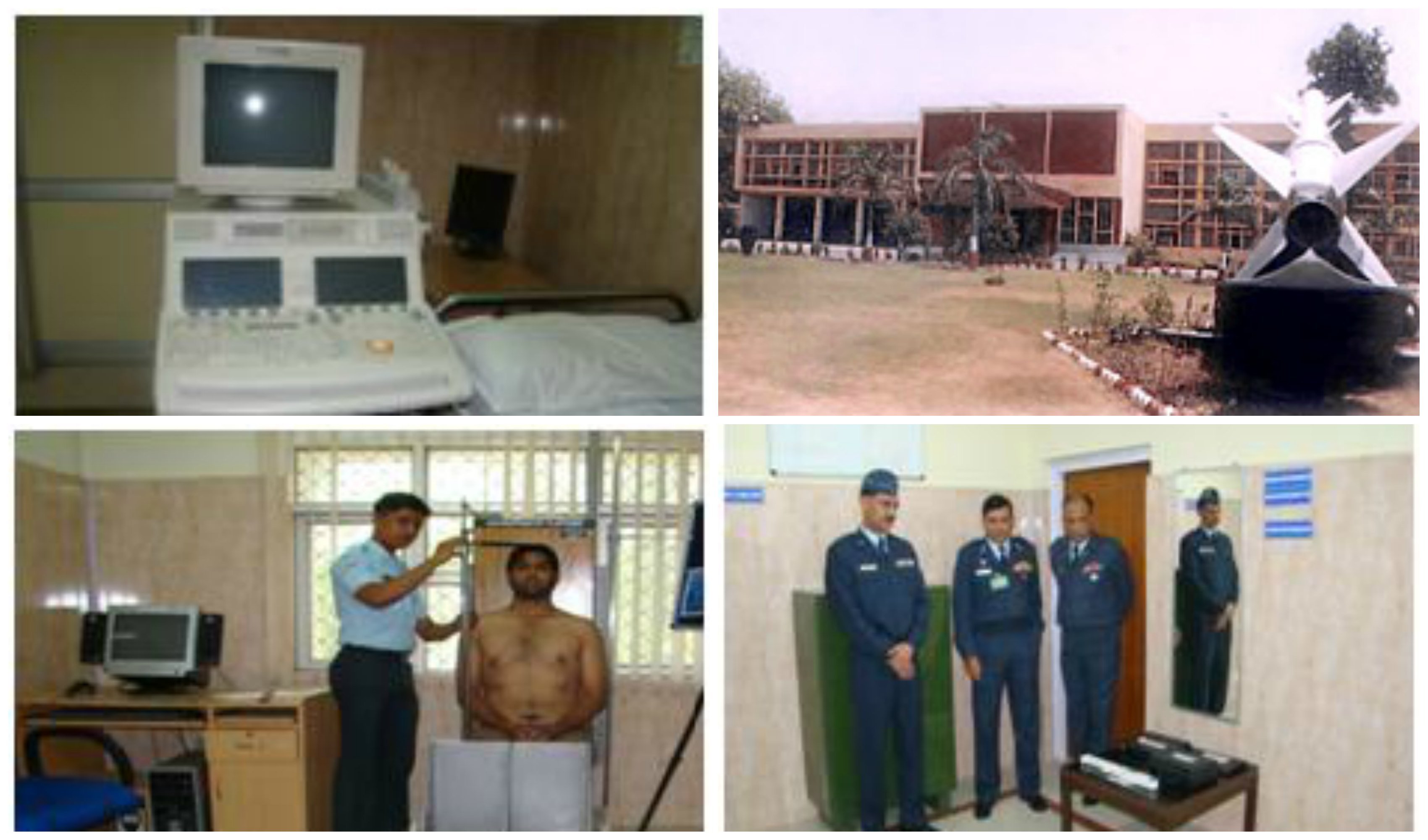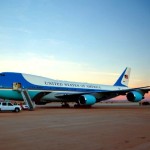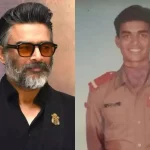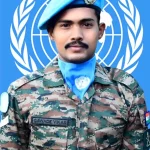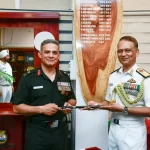Medical examination is the next step after a person has been recommended by SSB. It is mandatory to go through all the tests and only those who are medically fit are eligible to join the armed forces. If you cleared AFSB, or SSB for flying branch in Navy or Coast Guard, you will be sent to Air Force Central Medical Establishment at Subrato Park, New Delhi. It is an elite medical institute which assesses your health and overall fitness and accordingly declares you fir or unfit for the above mentioned branches. The medical standards here are amongst the most stringent amongst all defence medical establishments, hence there is no margin of error. They have the best doctors and state-of-art equipments to assess a person’s health.
I was recommended from Coast Guard Selection Board, Noida along with another candidate, for pilot entry in Indian Coast Guard on 13th March’15 (02/2015 batch). Accordingly, we were asked to report at AFCME on 16th March’15 for aviation medicals. The entire procedure took 5 days and it was actually more nerve wrecking than the Final Selection Board itself. I say this because in SSB/FSB, you are aware of how you performed. You can measure your strengths and weaknesses, and cover up in case you falter in previous rounds. But in medicals, things are mostly not in your hands.
Medical Examination Procedure at AFCME New Delhi
Day 1
We had to report at AFCME at 9.00 AM. Candidates who had been recommended from AFSB Dehradun and AFSB Varansai (through AFCAT –Jan 2016 course) for various branches in Air Force were also there. In all, we were a group of around 20 people. The day started with filling of lengthy forms, which took around 2 hours. I was expecting that we would be given chest numbers but we weren’t.
Height, weight and chest expansion: We were taken to another room where our basic measurements that is weight, height and chest expansion were measured. This shouldn’t be an issue as long as you are above the minimum height requirement and are not over or underweight. Chest expansion should be minimum 5 cm. This is also easily achievable by everyone. You can measure it at home and if you think you are falling short of the minimum benchmark, breathing exercises for lung capacity enhancement or yoga could help. Refer to the weight-height correlation chart to find out if you need to gain or lose weight, or if your weight is within the set limits. Remember, (+/-) 10% weight difference is admissible.
Dental check-up: AFCME doesn’t have a dental check-up facility so all of us were taken to Air Force Dental Centre, Palam which is located nearby. The doctors examined the overall health of our teeth, and counted the dental points. They also checked for open bite and close bite. Some people were worried that they might be rejected because they had got Root Canal Treatment (RCT) done. However, it is not an impediment. You should have a minimum number of dental points (generally 14) depending on your branch.
Audiometry Test: We came back to AFCME within an hour and proceeded for the hearing test. First the doctor will check your outer ear to ensure there are no injuries or blockages. Then eardrum pressure test is carried out using a special device. The main test is audiometry test. In this, you have to sit inside a sound proof room with headphones on. You have to hold a button in your hand, and every time you hear a ‘beep’ sound, you have to press the button. Now this is the tricky part. The sound is the faintest thing you can imagine hearing. It is played in quick successions, with increasing and decreasing frequency. The sound also shifts from one ear to the other in a random manner to ensure that both your ears can hear sound of all the frequencies. You will not be told when the sound starts playing, so you may miss out on the initial ‘beeps’, which is what happened to most of us. To avoid this, simply close your eyes and focus on your ears and the sound as soon as you’re wearing the headphones. Concentrate on the task, and block out everything else. The test is not tough, but it requires you to be completely focused.
ECG: Followed by hearing test was ECG, which stands for Electro Cardiogram test. It is a simple test to measure the working of your heart. You have to lie down and probes are attached to your limbs and around the heart. Within 15-20 seconds, the results are displayed on the machine for the doctor to analyze. Be relaxed and calm during the process. Breather normally, and do not get tense.
With this, the day came to an end. AFCME closes at 3.00 PM and so all tests are wrapped up by 2 to 2.30 PM. We were asked to report empty stomach at 7.30 AM the next day. Two tablets were given to us for the purpose of cleaning our digestive tract. These need to be consumed after dinner. If you are a candidate for flying branches in ICG, Navy or Army Aviation Corps, you have to make your own living arrangements in Delhi for the duration of medicals as accommodation is provided only to Air Force candidates.
Day 2
As required, we reached at 7.30 AM on an empty stomach and feeling extremely hungry. It is important not to eat anything as doing so will muddle up your test results. A few hours of battling hunger pangs is better than getting rejected for minor reasons. So do exercise self control for the sake of these tests.
Blood and Urine Test: Both tests are pretty much self-explanatory. You have to give blood and urine samples to rule out any diseases. People who are anaemic should take measures to improve the same as otherwise you are sure to get temporary rejection. If you are over or under weight, you will be given water and glucose to drink and you have to give another blood sample after 2 hours. This is to check if your body is able to break down the sugars in the given time.
X-Ray: If you are a pilot candidate, 7 different x-rays will be taken while the number is 3 for other candidates. You have to stand or lie down in different positions so that X-ray of your chest, back, elbows, shoulders, skull etc can be taken. Basically they want to ensure that you have no damage, injury or fractures in your bones. Also, the spinal cord angle, shape and alignment of bones are important parameters. In case you had a fracture in any bone earlier, do mention it. As long as the bone is completely healed, it will not be a problem.
Ultrasound: The purpose of this test is to check whether your liver, kidneys, stomach, bladder etc are intact and healthy. Like, ECG, it is very simple and you just have to lie down for around a minute while the doctor checks your internal organs using the ultrasound device. This test is the main reason behind not being allowed to eat anything. The doctor needs to be able to see your internal organs clearly in order to give proper judgement. We ate to our heart’s content once we were through with ultrasound!
Physical Examination and Blood Pressure: The doctor checks the shape of your hands, legs and body in general. Things such as elbow angle, knock knees, flat foot, sweaty palms, number of fingers, webbed fingers, shape of chest, are checked. Followed by this is BP check. A lot of candidates have a normal BP which shoots up as soon as they see the machine. Just breathe normally and stay calm. Getting tense will only increase your BP, which is one of the causes for rejection.
Eye test: One of the basic tests but also one which everyone was dreading. For flying branch, the eyesight should be 6/6 while for ground duties, 6/9 or a little more is permissible. We had to read alphabets from a certain distance with one eye covered at a time. It was very easy and almost everyone was able to clear it. Those who were not able to read properly were made to undergo additional tests. We were administered only this basic test as it was almost closing time. The rest of eye tests were scheduled for the next day.
Day 3
ENT: In ENT, the doctor examined our ears and nose thoroughly. A buzzer test was carried out, in which the doctor placed a buzzing device in one year while whispering random numbers in the other ear. We had to say those numbers loudly. It was done multiple times for both ears but was very easy. It is an alternative to the famous test where a paper is placed over your ear and a scratching sound is made, while another person whispers numbers from a certain distance.
Martin Lantern eye test: This was only for pilot candidates. It is to assess whether you can distinguish colours from a distance and to ensure that you’re not colour blind. We were taken inside a dark room. A lantern was kept at a distance of around 10 feet. This lantern has two small holes, both of which can display lights of three different colours- white, red or green in a random manner. It can be any combination, like white-red, white-white, red-green, green-white etc. The white colour may look yellowish from a distance to some people depending on their colour perception, but you only have to say white. The lights were changed quickly and we had to say which two colours we saw. It was a very interesting test and we all cleared it easily.
Pupil dilation test: Perhaps the most important eye test, as it allows the doctor to view your eyes in a detailed manner. Your pupils will be dilated by putting eye drops (thrice, every 15 minutes). For 45 minutes, you have to sit with your eyes closed to ensure proper dilation. Then, using a special device, the doctor carries out a detailed examination of the eye to rule out any damage or injuries which could manifest themselves in the future in the form of more serious issues. A lot of people, including myself, were found to have issues in this test.
One note of caution about this test- you’ll not be able to see objects at a close distance for up to 2 hours after dilation. Even doing simple tasks like viewing your cell phone and written material will be tough as everything will look blurred. Sunlight will literally hurt your eyes. So it is advisable to carry sunglasses to reduce the discomfort while going out.
Anthropometry: Your body measurements are taken and they should fall within the prescribed parameters. These are more stringent for pilot candidates because they need to be able to fit inside cockpits which are quite constricted. Various measurements, like sitting height, overall height, thigh length, leg length, etc are taken. There is really nothing much you can do in this test, as your height can not be increased in a short span of review time, and it obviously can’t be decreased if you’re found to be taller! The maximum and minimum lengths can be found on AFCME website.
That was the last test for almost everyone. In the case of those candidates who had some or the other issue, confirmatory checks were needed and we were referred to either Army Base Hospital or Army Research and Referral Hospital (R&R), depending on the problem.
Day 4
Because of some problem in pupil dilation test, I had to report at Army’s R&R Hospital at 9.00 AM, along with other candidates who had issues in eye test. R&R is a huge hospital and has top-notch facilities for all specialities. 6 of us reported at the eye department and one by one, underwent the required tests. I had to undergo the pupil dilation test once again but luckily, no anomaly was detected and the army doctor declared my eyesight to be normal. Eye test is one of the most extensively carried out procedure and can take up a lot of time in case you are detected with some problem. All of us came back to AFCME by afternoon but as it was quite late, our conference could not be conducted and it was scheduled for Friday, i.e. the next day.
Day 5
The most awaited conference day finally arrived. I can easily say all of us were under far more stress than we were on the day of conference in SSB as the stakes here were much higher. By now, we had a rough idea about our probable shortcomings but that only added to the worries. Around 10 AM, the conference started. The President was an officer of Air Commodore rank. One by one, we went in to receive judgments about our fitness levels. The first few candidates were given Temporary Rejection (TR) because of various reasons. Then I went in, uncertain of the outcome. The President looked at all my papers and signed on it, declaring me ‘medically fit’. He smiled and wished me good luck for the merit list. With that, I came out, forgetting all the nervousness of the last few days. The 10 days of testing, including FSB and medicals were finally over and I felt relieved.
In our batch of around 20 people, only 7 or 8 were declared fit. The rest were given TR for various reasons, such as-
- Overweight (most common) or underweight (one or two people)
- Eyesight problems (second most common)
- Excessive carrying angle of elbows (called Cubitus Valgus)
- Anaemia
- Improper angle of spinal cord
- High BP
- Low count of platelets in blood test
Those who were given TR had to fill forms to apply for review medical board, which takes place after 42 days. That means, a candidate, if declared medically unfit for whatever reason has 42 days to cure that problem, and report the progress at designated medical establishment. Some conditions may require surgery so it is advisable to think about it carefully but do it as soon as possible if really needed, as the healing process needs some time.
Other tips and advice
- It is a good idea to start doing basic exercises (if you’re not doing it already) such as walking, jogging, running, swimming, cycling, skipping etc 2-3 months before the date of your SSB. You need to be have a basic level of fitness otherwise some or the other problem will crop up during the medical checks.
- You can undertake a cautionary medical check-up to rule out any issues. Blood test, urine test, BP check, are all 30 minute procedures which will give you unparalleled peace of mind during the actual medicals.
- If you have conditions such as knock knees or flat foot, start doing exercises from today itself as they are completely curable. Don’t take a chance with it- you will surely be rejected for such conditions.
- You can not see the reports, only fir ot unfit is tld to you

